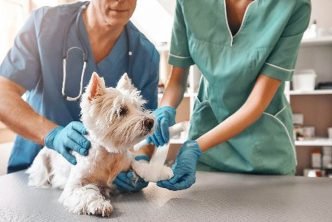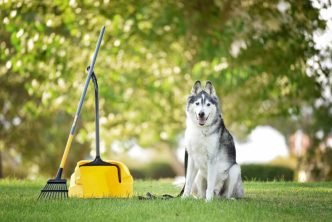Every dog is unique, and so is its coat. From the dense, curly fur of the Poodle to the straight, silky locks of the Yorkshire Terrier, each breed has specific grooming needs. Proper grooming is essential for the overall health and well-being of our canine companions, and choosing the right brush can make all the difference. As Taylor Vader, a renowned dog groomer from Garden Ridge, Texas often emphasizes, the appropriate brush not only ensures an efficient grooming session but also enhances the dog’s comfort during the process. By acknowledging the dog’s individual needs, owners can ensure the grooming process is both beneficial and enjoyable.
Table of Contents
Understanding Canine Coat Types
Dogs come with a variety of coat types. Some have a single layer of fur, while others sport a double coat. There are breeds with short, smooth fur, those with long and silky tresses, and others with tight, curly locks. Recognizing the kind of coat your dog has is the first step in providing optimal grooming care. Additionally, understanding coat types can also provide insights into potential health issues or sensitivities your breed may possess. By being proactive and informed, you’re taking a crucial step towards ensuring your dog’s well-being.
Short-haired Breeds: Breeds like the Dachshund, Beagle, and Boxer have short, sleek coats. These dogs shed, but their hair is less prone to matting or tangling. Regular brushing not only keeps them looking neat but also massages their skin, increasing circulation. This promotes healthier skin and aids in shedding dead hair more effectively.
Long-haired Breeds: Breeds like the Maltese, Shih Tzu, and Afghan Hound have longer, often silky hair that can mat and tangle easily. Regular grooming for these breeds is non-negotiable, as neglecting their coat can lead to severe skin issues. Their lush coats can be a statement of beauty when cared for and can often be the envy of other dog owners.
Double-coated Breeds: Dogs like the Golden Retriever, Husky, and German Shepherd have a soft undercoat beneath a rougher top coat. These breeds typically shed more, especially during seasonal changes. Regular grooming can significantly reduce the amount of hair left around your home. Furthermore, double-coated breeds often enjoy the grooming process as it offers them a sense of relief, especially during shedding seasons.
Curly or Wavy Coats: Breeds like the Poodle, Bichon Frise, and Curly-Coated Retriever have naturally curly or wavy fur that can be prone to matting. Maintaining these curls requires consistent grooming and might sometimes require specialized products to keep their coat healthy and bouncy. Curly coats, when properly maintained, can be a standout feature, highlighting the breed’s distinct appearance.
The Right Brush for the Right Breed
Each coat type requires a specific kind of brush to keep it in top condition. Knowing which brush to use can drastically affect the grooming experience for both the dog and the owner. In fact, the right brush can also reduce the grooming time and effort significantly.
For Short-haired Breeds: A bristle brush works best. It helps remove loose hair and stimulates the skin, promoting natural oil production for a shiny coat. Using the right brush also minimizes the risk of skin scratches or irritations, ensuring a more pleasant grooming session.
For Long-haired Breeds: A pin brush or a slicker brush is ideal. These brushes can detangle knots and prevent matting, which is crucial for these breeds. Not to mention, a well-groomed long-haired breed can look absolutely majestic with its flowing, shiny fur.
For Double-coated Breeds: Undercoat rakes or deshedding tools are a godsend. They penetrate through the topcoat to remove loose undercoat fur, reducing shedding and promoting healthier skin and fur. The satisfaction of getting all that excess hair out cannot be understated, both for the owner and the pet.
For Curly or Wavy Coats: A slicker brush is typically the go-to tool. It helps in detangling and defining those curls, preventing mats and knots. Plus, a well-defined curly coat showcases the breed’s unique beauty and charm.
Special Considerations for Specific Breeds
Beyond the coat type, specific breeds may have other grooming requirements based on their genetics or typical health concerns. Tailoring your grooming approach to the breed can ensure a more holistic care regimen. For many dog owners, understanding these breed-specific nuances can make all the difference in their pet’s comfort and health.
For instance, some breeds, like the Bulldog or the Pug, have skin folds that require regular cleaning to prevent bacterial buildup. Additionally, keeping these folds dry is crucial to prevent fungal infections. On the other hand, long-eared breeds like Cocker Spaniels may be more prone to ear infections, emphasizing the importance of regular ear checks and cleanings during grooming sessions.
Grooming Techniques: More Than Just Brushing
While brushing is a significant component of grooming, it’s not the only factor to consider. Different breeds can have varying sensitivities to grooming techniques, and mastering these techniques can lead to a happier, stress-free grooming session. The way you approach grooming can make a world of difference in your dog’s experience.
Brushing Direction: Always brush in the direction of hair growth. For curly-haired dogs, it may be helpful to brush in sections, ensuring all layers of the coat are groomed. This directional approach minimizes tugging and maximizes comfort, leading to a more enjoyable grooming session for your pet.
Frequency: While some dogs benefit from daily brushing, others might require less frequent grooming. However, regular check-ins are crucial to spot potential skin issues or parasites. Adapting the frequency based on your dog’s needs ensures they always look and feel their best.
Trimming and Clipping: Breeds with continuously growing hair, like the Poodle or the Shih Tzu, need regular trims. Always use sharp, clean tools, or consider seeking a professional groomer for best results. Regular trims not only ensure that your dog looks neat but also help in preventing potential skin irritations caused by overgrown fur.





